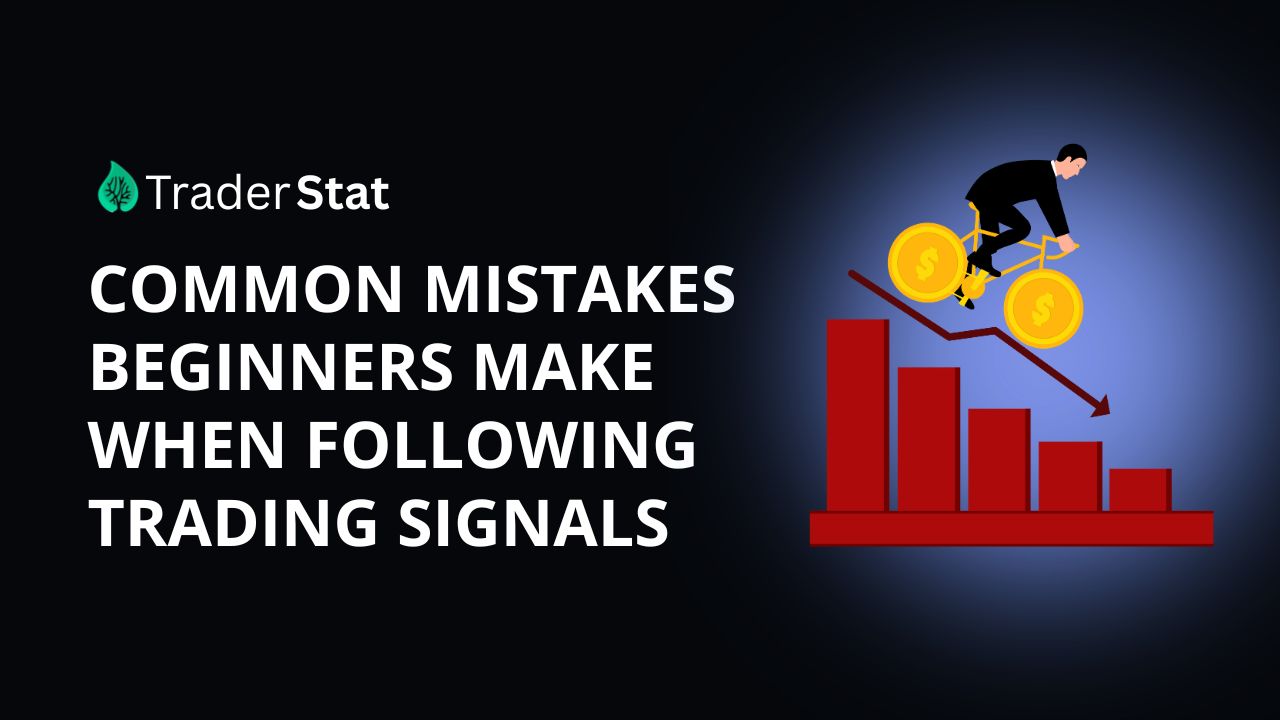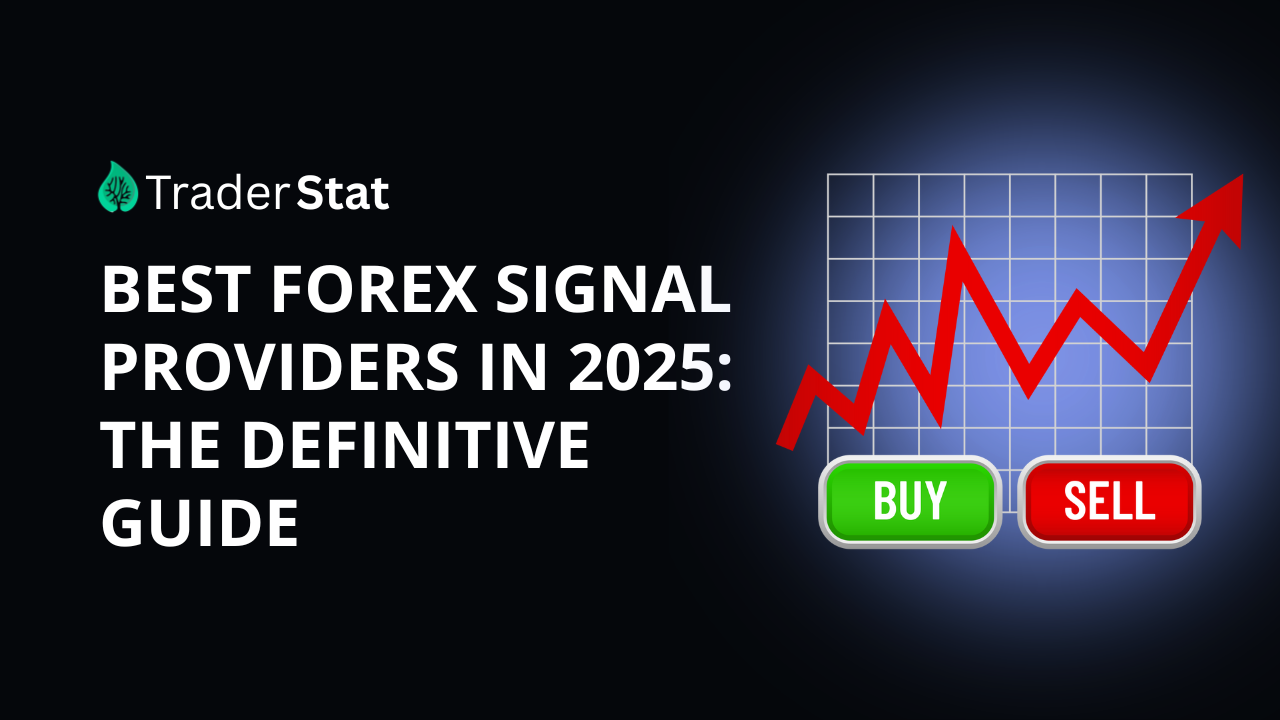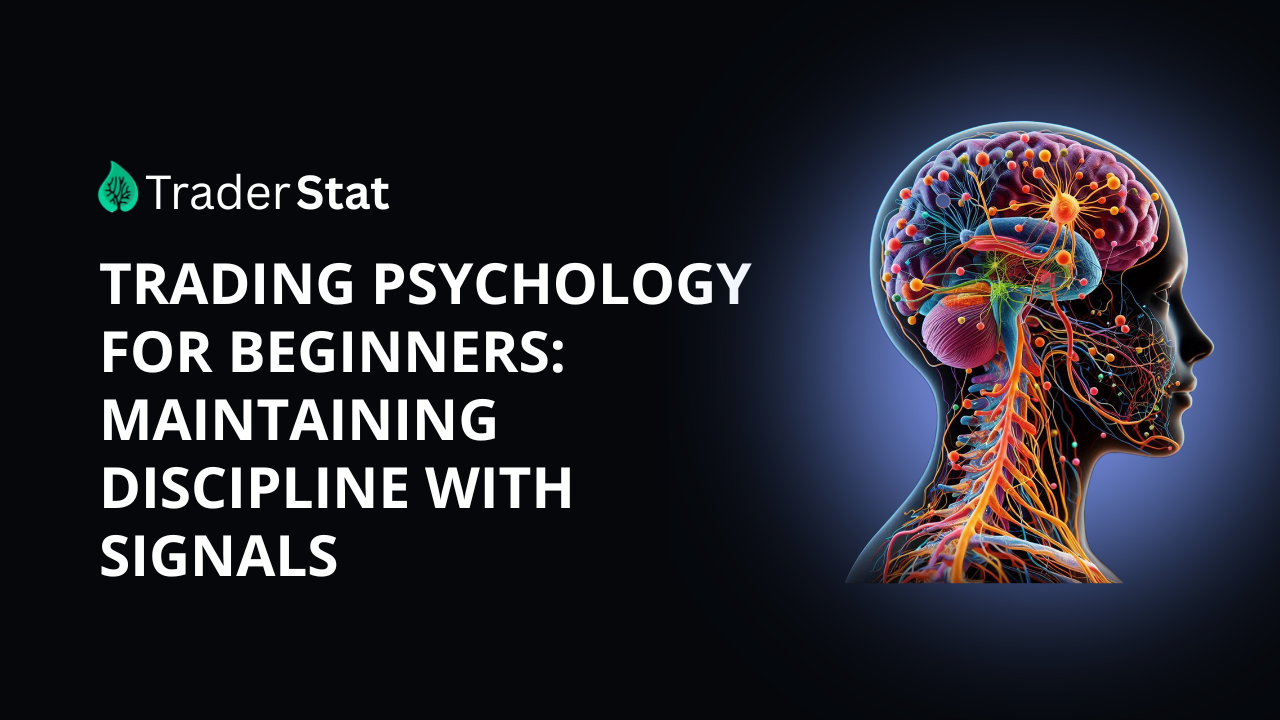
Trading Psychology for Beginners: Maintaining Discipline with Signals
Introduction
Trading in financial markets offers exciting opportunities for wealth creation, but success isn't solely determined by market knowledge or analytical skills. Behind every successful trader lies a robust psychological foundation that enables consistent decision-making even during market volatility. For beginners especially, understanding trading psychology is just as crucial as learning technical analysis or fundamental research. Navigating the emotional rollercoaster of trading can be daunting, especially when choosing reliable signals. At TraderStat.com, we simplify this process by tracking and verifying the best trading signal providers, ensuring beginners like you can trade with confidence. Discover top-rated providers with proven track records
Discipline—the ability to follow predetermined rules and strategies despite emotional impulses—stands as perhaps the most important psychological trait for trading success. According to a study by the CFTC (Commodity Futures Trading Commission), approximately 70% of retail traders lose money, with psychological factors often cited as the primary reason for these losses. This article explores how beginners can develop the mental discipline needed to effectively utilize trading signals and achieve consistent results.
Understanding Trading Signals
Trading signals are indicators or triggers that suggest optimal entry or exit points for trades based on predetermined criteria. They serve as guideposts for making informed trading decisions without relying solely on emotions or hunches.
Types of Trading Signals
- Technical Signals: Derived from price action and mathematical calculations on historical price data. Examples include:
- Moving average crossovers
- RSI (Relative Strength Index) overbought/oversold conditions
- MACD (Moving Average Convergence Divergence) signals
- Support and resistance breakouts
- Fundamental Signals: Based on economic events, company performance, or news that affects asset valuations:
- Earnings reports exceeding or missing expectations
- Economic data releases (unemployment figures, GDP growth)
- Central bank policy decisions
- Industry developments
- Sentiment-Based Signals: Reflect market mood and trader psychology:
- Put/call ratios indicating excessive bearishness or bullishness
- Investor surveys showing extreme sentiment
- Social media sentiment analysis
- Commitment of Traders (COT) reports
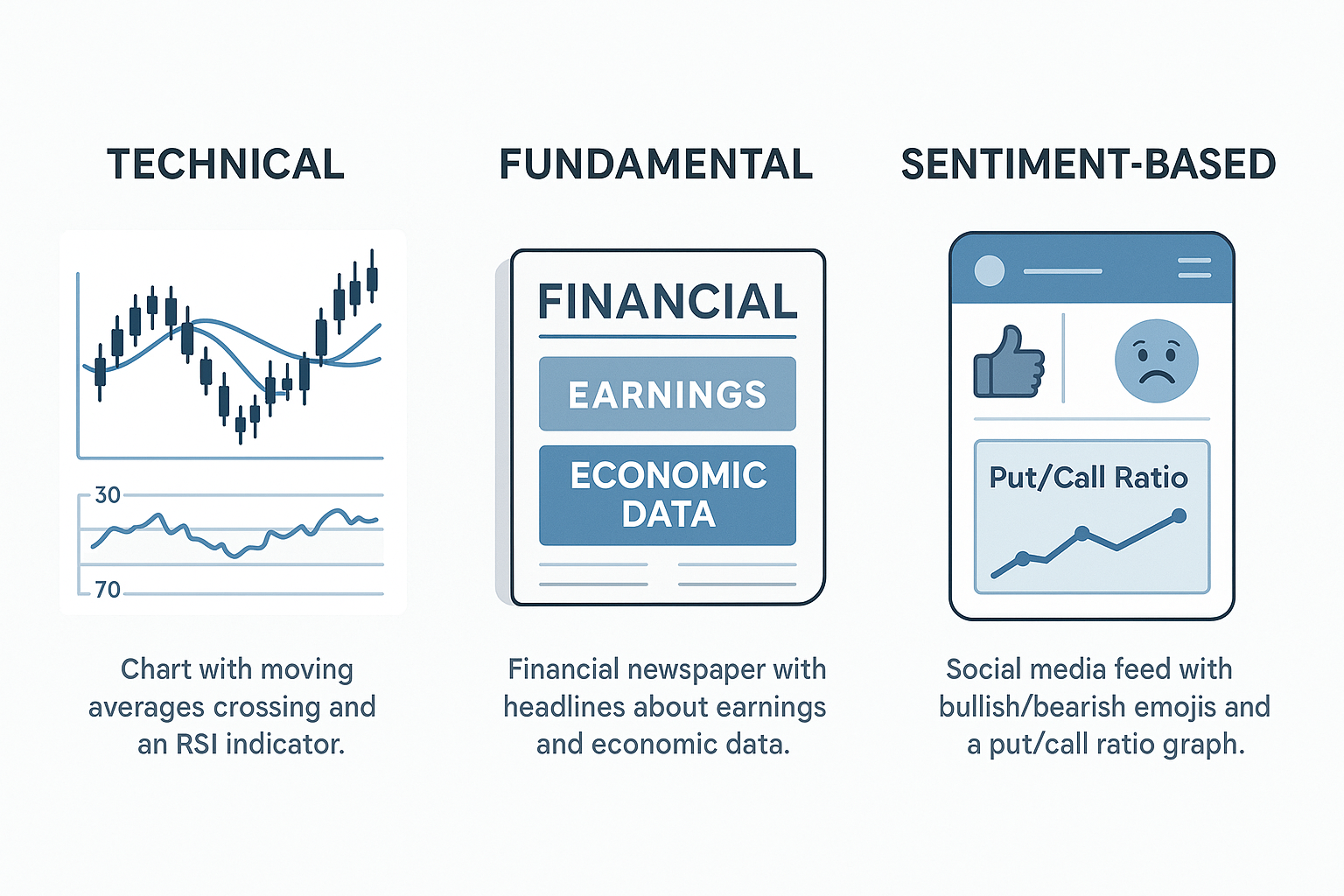
For beginners, understanding that different signal types offer complementary perspectives is important. While technical signals might indicate a buying opportunity, fundamental signals could contradict this view, highlighting the need for a comprehensive approach.
The Psychological Aspects of Trading
The human mind, evolved for survival rather than financial market navigation, often works against trading success. Two primary emotions frequently derail trading decisions:
Fear and Its Impact
Fear manifests in trading as:
- Fear of missing out (FOMO), leading to impulsive entries
- Fear of loss, causing premature exits from profitable trades
- Fear of being wrong, resulting in refusal to cut losses
Research by behavioral economists has shown that the pain of losing money is psychologically about twice as powerful as the pleasure of gaining the same amount. This "loss aversion" often causes traders to hold losing positions too long while taking profits too early.
Greed and Its Consequences
Greed drives traders to:
- Ignore risk management guidelines to pursue larger gains
- Overleverage positions beyond reasonable risk parameters
- Chase market movements without proper analysis
- Deviate from trading plans when seeing potential opportunities
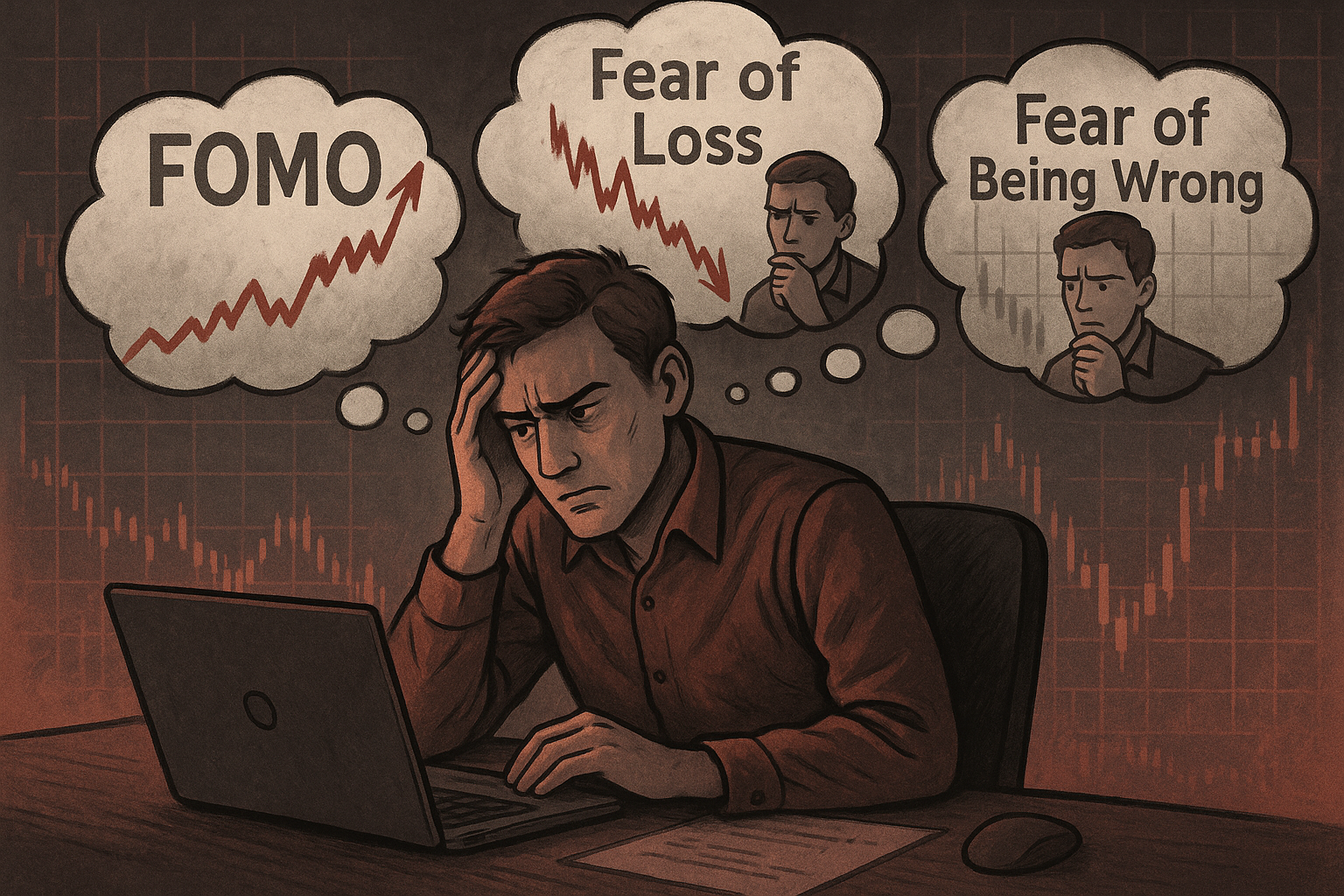
Cognitive Biases
Several cognitive biases influence trading behavior:
- Confirmation Bias: Seeking information that confirms existing beliefs while ignoring contradictory evidence
- Recency Bias: Giving excessive weight to recent market events when making decisions
- Anchoring: Fixating on specific price points or previous trades when making new decisions
- Overconfidence: Overestimating one's ability to predict market movements after a string of successful trades
A study published in the Journal of Finance found that the average retail investor underperforms market indices by approximately 1.5% annually, with psychological biases being a significant contributing factor.
The Importance of Discipline
Trading discipline is the consistent application of predetermined rules and strategies regardless of emotional states or market conditions. It forms the bridge between knowledge and results.
What Trading Discipline Looks Like
- Following a well-researched trading plan without deviation
- Executing stop-loss orders without hesitation
- Taking profits at predetermined targets
- Trading only when specific criteria are met
- Maintaining proper position sizing regardless of recent results
- Keeping detailed trading journals to track performance
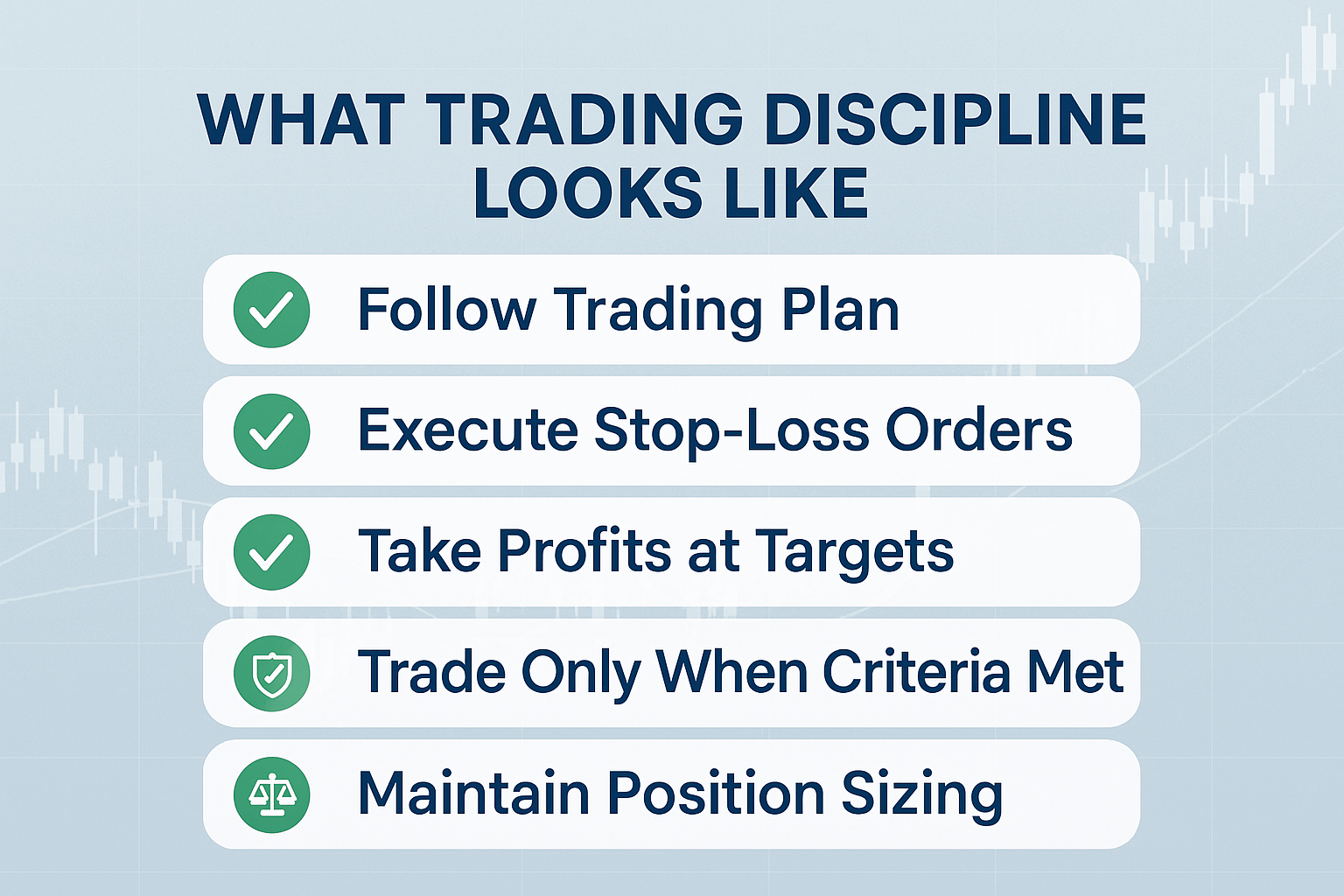
The Cost of Indiscipline
When discipline lapses, traders typically experience:
- Inconsistent Results: Random successes followed by preventable failures
- Account Drawdowns: Overleveraging or failing to cut losses leads to significant capital reduction
- Emotional Trading: Decision-making based on current feelings rather than objective analysis
- Strategy Hopping: Abandoning viable strategies before they can prove effective
- Burnout: Mental exhaustion from the stress of undisciplined trading
According to trading psychology expert Dr. Brett Steenbarger, the difference between professional and amateur traders often isn't knowledge—it's the consistent application of that knowledge through disciplined execution.
Strategies for Maintaining Discipline
Developing trading discipline is a process that requires deliberate practice and awareness. Here are effective strategies for beginners:
- Create a Detailed Trading Plan
A comprehensive trading plan should include:
- Clear entry and exit criteria
- Risk management rules (position sizing, maximum account risk)
- Types of signals you'll respond to
- Market conditions where you'll be active or inactive
- Time frames for analysis and trading
- Implement a Pre-Trade Checklist
Before entering any position, review a checklist confirming:
- The trade aligns with your overall strategy
- Multiple signal types confirm the opportunity
- Position sizing follows risk management guidelines
- Stop-loss and take-profit levels are predetermined
- You're in a neutral emotional state
- Practice Mindfulness and Self-Awareness
Emotional self-regulation begins with awareness:
- Identify your emotional triggers in trading
- Recognize physical signs of emotional trading (increased heart rate, restlessness)
- Take trading breaks during periods of emotional volatility
- Use mindfulness techniques before making trading decisions
- Use Technology to Enforce Discipline
Automation can remove emotional decision-making:
- Set predetermined stop-loss and take-profit orders for every trade
- Use trading platforms that allow strategy automation
- Create alerts for potential trades rather than watching markets continuously
- Employ position sizing calculators to maintain consistent risk
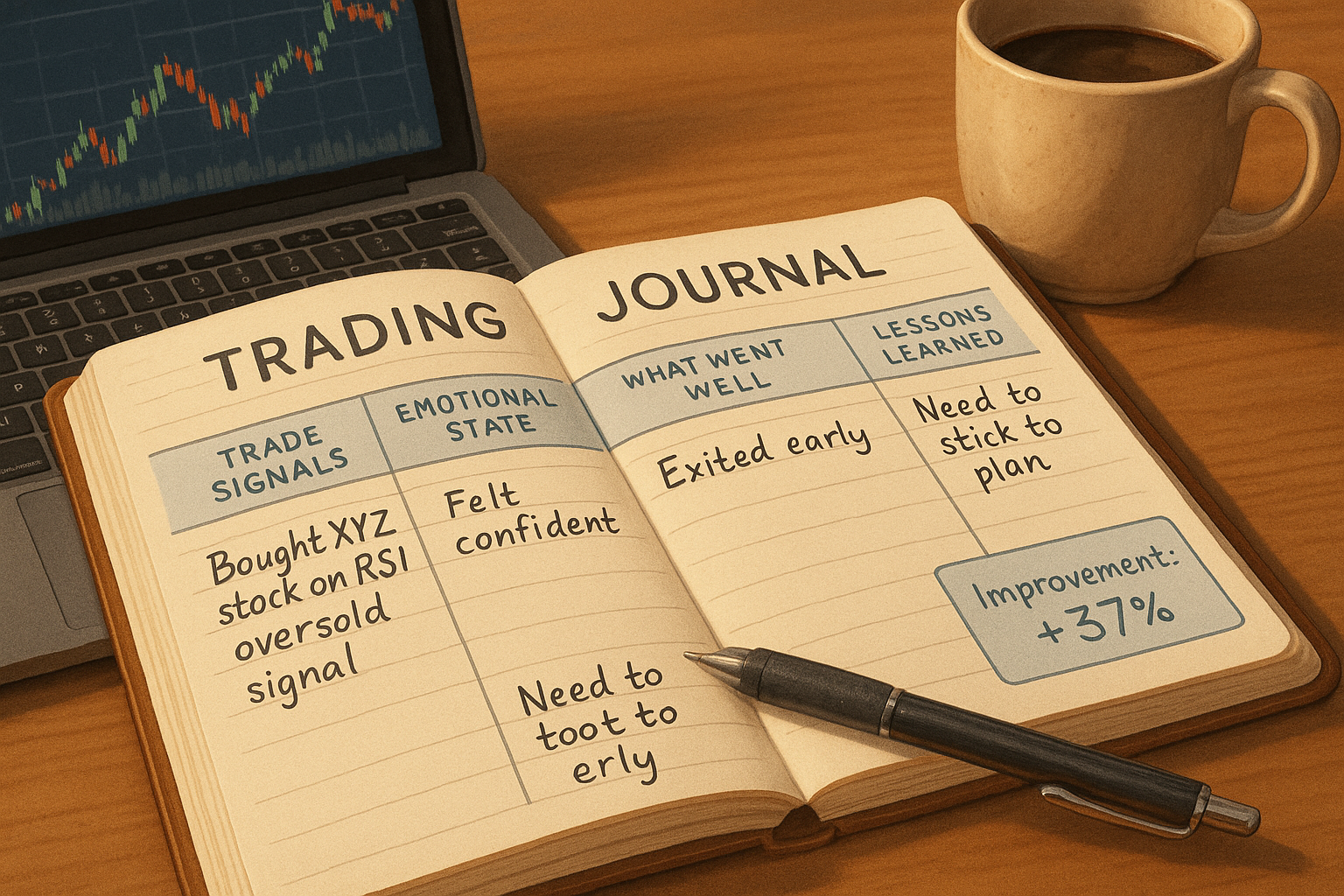
- Keep a Detailed Trading Journal
Document every trade with:
- The signals that prompted the trade
- Your emotional state before, during, and after
- What went according to plan and what didn't
- Lessons learned for future improvement
A study by Trading Psychology Edge found that traders who maintained detailed journals for at least six months saw an average performance improvement of 37% compared to their pre-journaling results. Sticking to a trading plan is easier with reliable signals. TraderStat.com helps you stay disciplined by connecting you with top signal providers, verified for accuracy and performance
Utilizing Signals Effectively
Trading signals provide objective criteria for decisions, but their effectiveness depends on how disciplined traders are in using them. Also they are only as good as their source. That’s where TraderStat.com comes in—we rigorously track and verify signal providers to deliver only the most accurate and reliable options. Explore our rankings and find signals you can trust to stay disciplined
Finding the Right Signal System
The ideal signal approach for beginners should be:
- Simple enough to understand completely
- Robust enough to work across different market conditions
- Aligned with your trading personality and risk tolerance
- Clear in its indications (minimal ambiguity)
- Backtested with proven reliability
Common Mistakes in Signal Usage
- Signal Overload: Following too many signals creates confusion and analysis paralysis
- Cherry-Picking: Selectively following signals that confirm existing biases
- Disregarding Timeframes: Using signals without considering appropriate time horizons
- Ignoring Conflicting Signals: Failing to recognize when different signal types contradict
- Signal Dependency: Relying solely on signals without developing market understanding
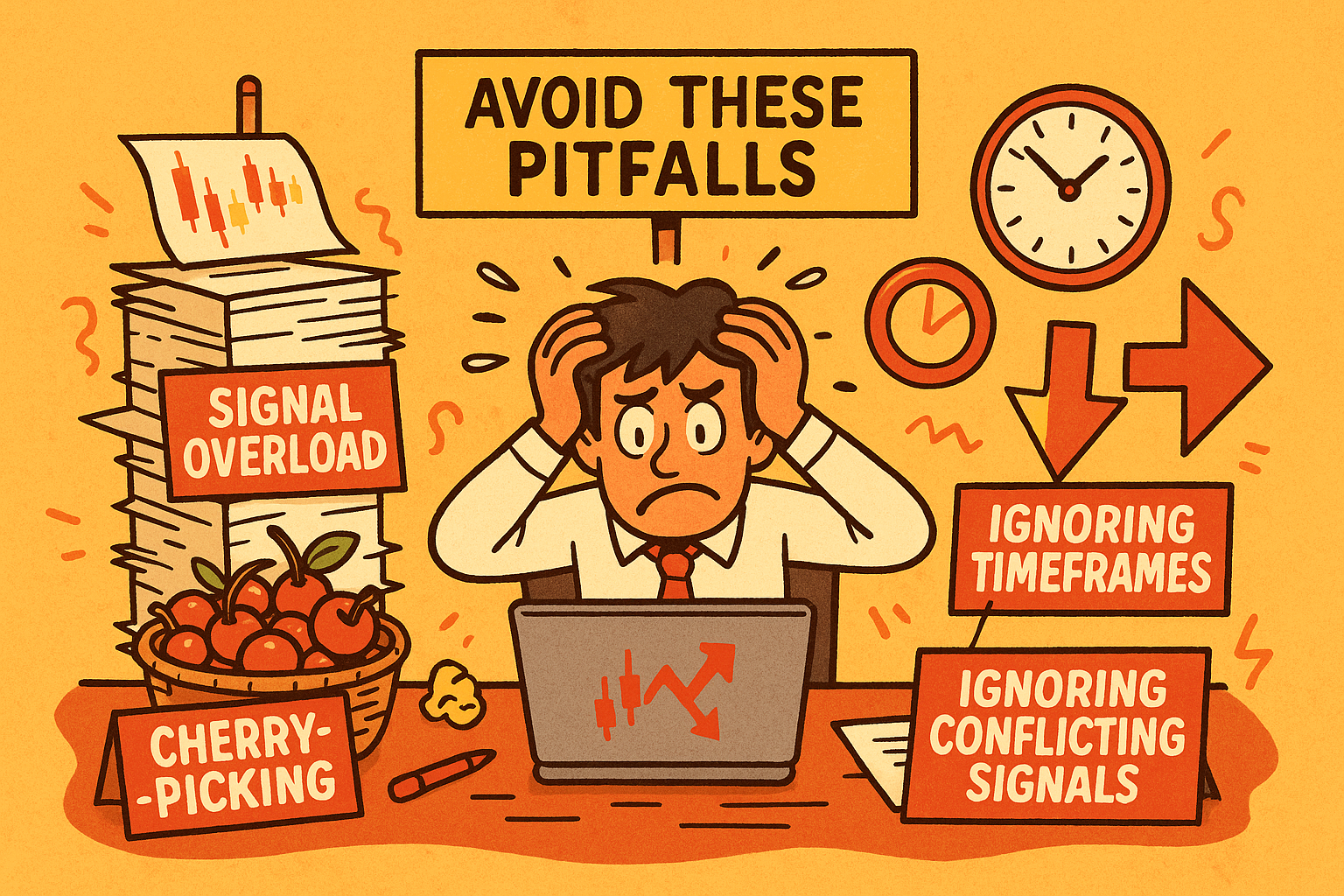
Balancing Signals with Judgment
Effective signal usage involves:
- Using signals as confirmation tools rather than sole decision-makers
- Weighing the strength and reliability of different signal types
- Developing an understanding of which signals work best in particular market conditions
- Gradually incorporating personal judgment as experience grows
- Regularly reviewing signal effectiveness through your trading journal
Common Psychological Pitfalls and Solutions
Pitfall 1: Revenge Trading
Problem: Making impulsive trades to recover losses
Solution: Implement mandatory cooling-off periods after losses; set daily loss limits that trigger trading stops
Pitfall 2: Overtrading
Problem: Excessive trading during market hours out of boredom or excitement
Solution: Establish clear criteria for what constitutes a high-probability setup; trade only when these criteria are met
Pitfall 3: Analysis Paralysis
Problem: Being unable to execute trades due to information overload
Solution: Simplify your approach; focus on mastering a limited set of signals before expanding
Pitfall 4: The Disposition Effect
Problem: Holding losing trades too long and selling winners too early
Solution: Use predetermined exit points; consider using trailing stops for winning positions
Pitfall 5: Confirmation Bias
Problem: Seeking only information that supports your trading thesis
Solution: Deliberately seek contrary opinions; regularly review both successful and unsuccessful trades with equal scrutiny
Conclusion
For beginning traders, developing psychological discipline may be the single most important factor in long-term success. Trading signals provide valuable structure and objectivity, but they must be paired with disciplined execution to be effective.
Remember that trading psychology isn't innate—it's a skill developed through awareness, practice, and continuous improvement. Every successful trader has experienced psychological challenges on their journey. The difference between those who succeed and those who fail often comes down to their commitment to developing mental discipline.
Mastering trading psychology starts with reliable tools. TraderStat.com empowers you to trade confidently by tracking and verifying the best signal providers in the market. Ready to take control?
